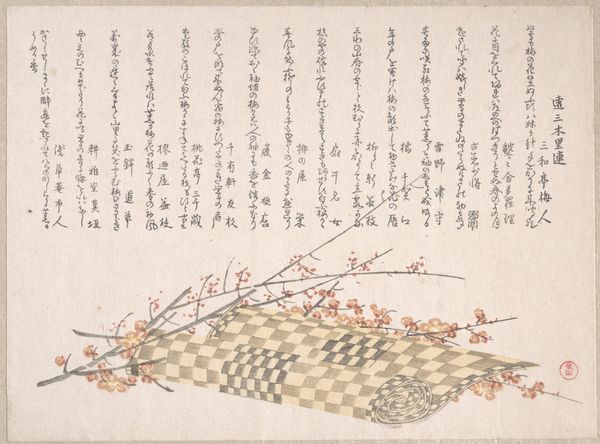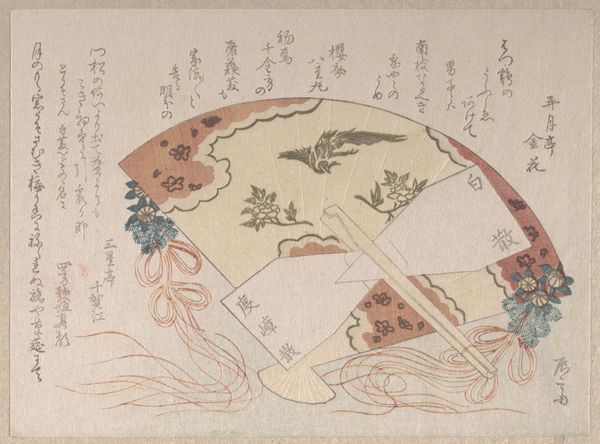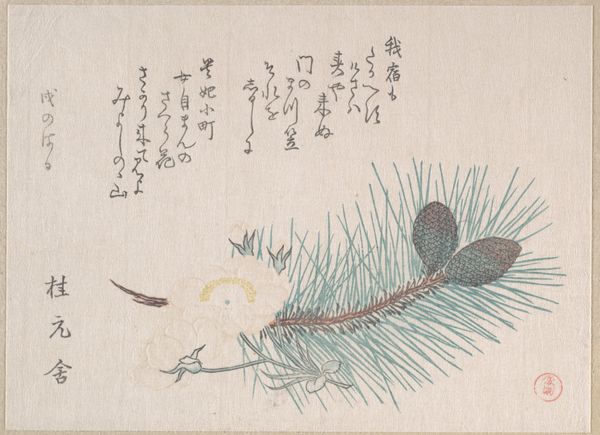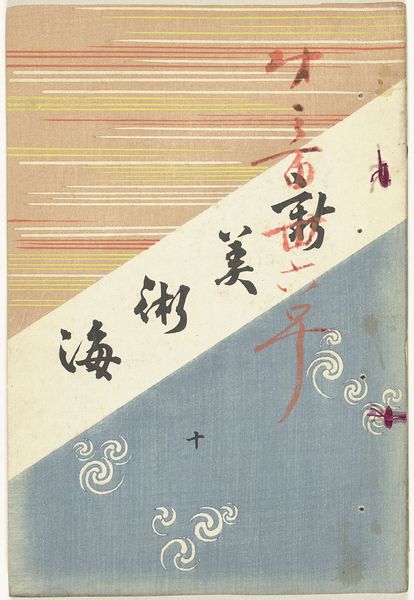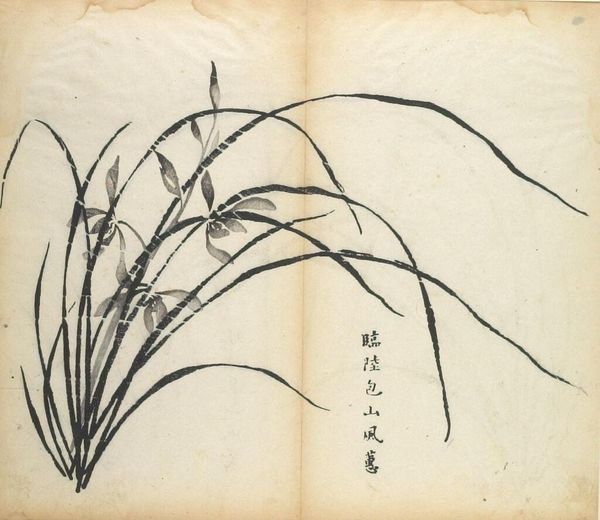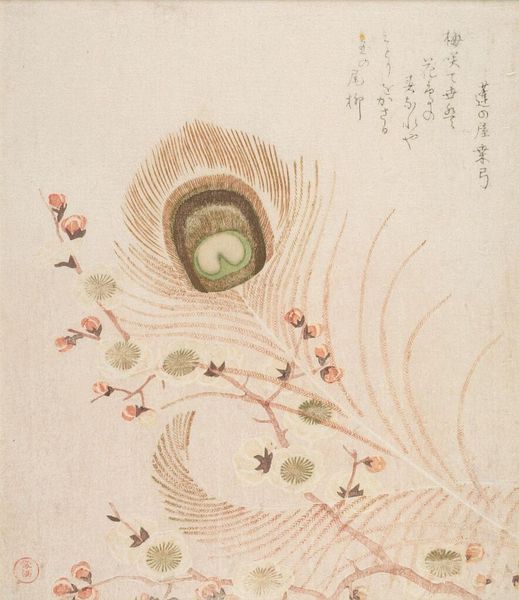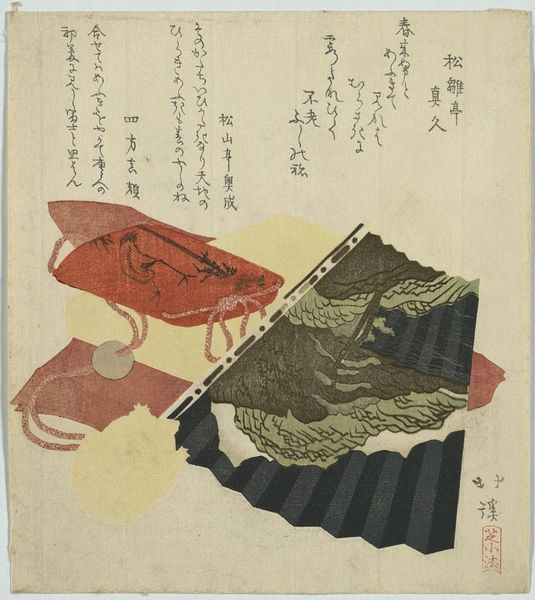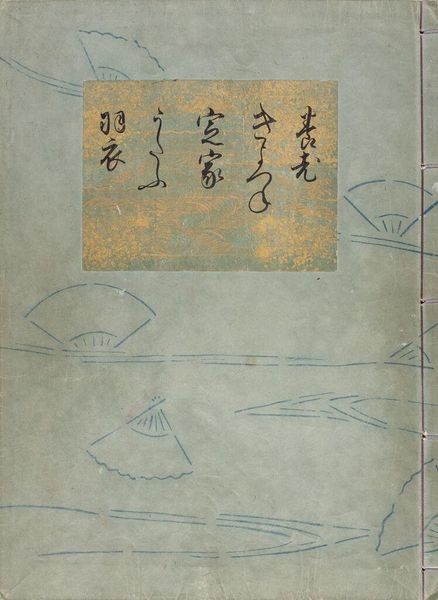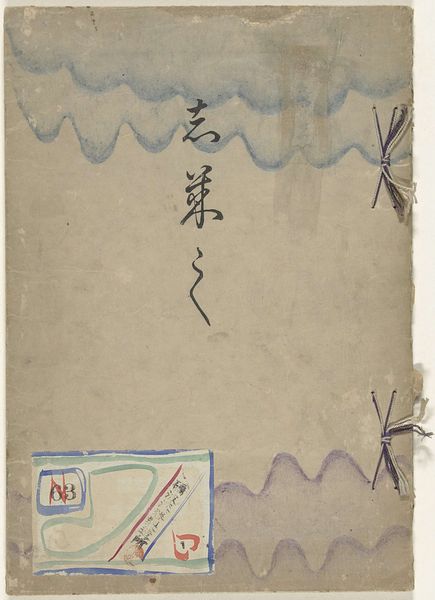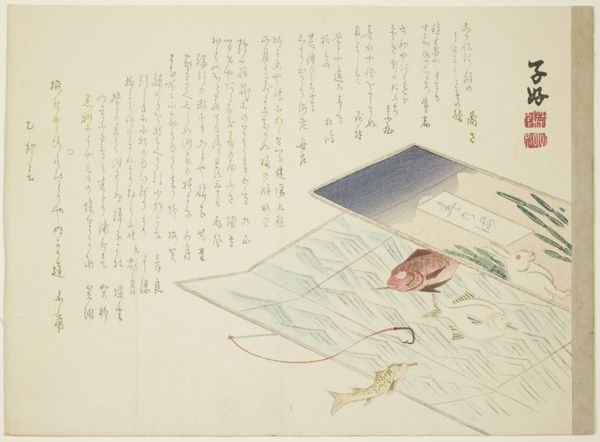
Phoenix (HÅÅ), from the series Five Birds (Goki no uchi) Edo period, late 18th-early 19th century
0:00
0:00
Dimensions: Paper: H. 13.9 cm x W. 18.4 cm (5 1/2 x 7 1/4 in.)
Copyright: CC0 1.0
Curator: Here we have Kubo Shunman's "Phoenix" from his series "Five Birds," part of the collection at the Harvard Art Museums. Editor: It’s so delicate! The colours are muted, and the lines so gentle. It feels like a whisper. Curator: Shunman, active during the Edo period, was deeply engaged with the aesthetics of his time, specifically the cultural context in which imagery from the natural world was a symbol of cultural expression. Editor: The production of these prints was a complex division of labor. The artist would have worked closely with the block carvers and printers, making decisions about color and texture. Curator: Absolutely. The Phoenix motif itself carries powerful symbolism, often associated with rebirth and renewal, reflecting the socio-political desires of the time. Editor: You can almost feel the grain of the woodblock in the paper, a testament to the tangible process of creation. Curator: Considering the phoenix’s role in Japanese culture, and how it was received then versus how it is received now, offers insights into the role of cultural values. Editor: Seeing the careful layering of colors reminds us of all the hands that touched this print. Curator: It does offer an interesting perspective on the changing perception of cultural symbols. Editor: Indeed. A delicate creation that speaks volumes about the materials used and their historical impact.
Comments
No comments
Be the first to comment and join the conversation on the ultimate creative platform.
